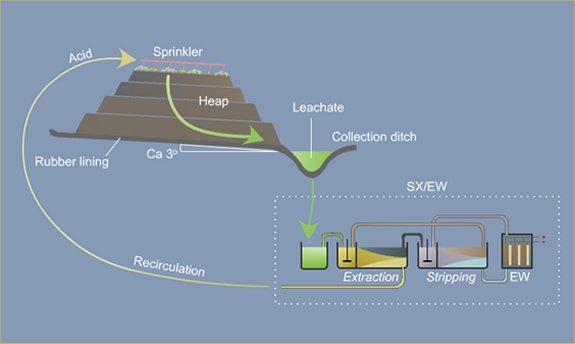How to determine the cyanide treatment plan?
Determining a Cyanide Treatment Plan
Developing a cyanide treatment plan is crucial for ensuring environmental safety and compliance with regulations. It involves a comprehensive assessment of various factors.
Key Considerations for Cyanide Treatment Plan
To determine whether a certain type of ore is suitable for cyanidation or flotation and reselection, visual assessment is followed by various targeted experiments to obtain various data, ultimately determining the optimal processing method through comprehensive evaluation.
Cyanide Concentration: Accurate measurement of cyanide concentration in different process streams is essential. This includes the leach solution, tailings, and effluent.
Cyanide Species: Different cyanide species (free cyanide, weak acid dissociable cyanide, total cyanide) have varying levels of toxicity. Identifying the predominant species is crucial.
Environmental Impact Assessment: Evaluate potential impacts on water bodies, soil, and ecosystems. Consider factors like water quality standards, ecological sensitivity, and local regulations.
Treatment Technologies: Explore available treatment technologies based on cyanide concentration, species, and local conditions. Options include:
Chemical oxidation: Using agents like sodium hypochlorite or hydrogen peroxide to convert cyanide to less toxic cyanate.
Biological treatment: Employing microorganisms to degrade cyanide.
Physical-chemical treatment: Using processes like adsorption, precipitation, or ion exchange.
Cost-Benefit Analysis: Evaluate the economic feasibility of different treatment options, considering capital and operational costs.
Regulatory Compliance: Ensure the treatment plan adheres to local, national, and international environmental regulations.
Emergency Response Plan: Develop a comprehensive plan for handling cyanide spills or accidents.
Steps in Developing a Cyanide Treatment Plan
Characterization: Conduct a thorough characterization of cyanide-containing waste streams.
Treatment Technology Selection: Choose appropriate treatment technologies based on the characterization results.
Pilot Testing: Conduct pilot-scale tests to evaluate treatment efficiency and optimize process parameters.
Treatment Plant Design: Design and construct the treatment facility based on the pilot test results and regulatory requirements.
Monitoring and Control: Implement a robust monitoring program to track cyanide concentrations and treatment performance.
Emergency Response: Develop and implement an emergency response plan.
Additional Considerations
Public Consultation: Engage with local communities to address concerns and build trust.
Training: Provide training to personnel involved in cyanide handling and treatment.
Continuous Improvement: Regularly review and update the treatment plan based on new information and technologies.
By following these steps and considering the various factors, you can develop an effective cyanide treatment plan that protects the environment and complies with regulations.
- Random article
- Popular articles
- Popular comments
- Iron Ore Weak Magnetic Beneficiation Process
- Gravity beneficiation process for iron ore
- Understanding the Gold Mine Flotation Process
- Gold Ore Carbon Slurry Beneficiation Process
- Zirconium Ore Processing: Gravity, Magnetic, and Electric Separation
- Manganese ore washing to achieve the best results
- Mica Ore Hand Selection: A Detailed Process















Leave a message with your needs or comments
Add comment: